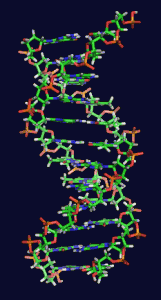
Two recent discoveries this week have overturned some of science’s most basic assumptions about life on earth and the probability of extra-terrestrial life elsewhere in the universe.
The first one was announced by NASA in a news conference today. Up until now the basic building blocks of life were considered to be : Carbon, hydrogen, oxygen, nitrogen, phosphorous and sulfur. In a press conference today NASA announced that they have discovered bacteria that use arsenic instead of phosphorous in their DNA. This implies that our current understanding of the biochemistry of life in the universe may be incomplete. Arsenic is highly toxic to almost almost all other forms of life on earth. If arsenic can be used one wonders what other building blocks nature can use to construct organisms and complex life! It appears that nature is far more ingenious than was previously imagined. It also implies that life may well arise and thrive in hostile and alien environments. And therefore be a lot more common in the universe than previously assumed.
The second surprising discovery- announced in a paper in Nature – is that there may be as many as three times more stars in the universe than was previously estimated. Astronomers have found that Red Dwarf Stars are 20 times more common in elliptical galaxies than in spiral galaxies like own our own Milky Way. Previously it was assumed that the frequency of occurrence of Red Dwarfs in other galaxies was similar to that in our own galaxy. Based on the ratio of spiral and elliptical galaxies, scientists now estimate that there could be at least three time more stars in the known universe than was previously thought. More stars implies more planets circling these stars and therefore more planets capable of supporting life. Red dwarfs are generally more than 10 billion years old which is long enough for complex life to evolve, possibly even intelligent life.
It is interesting that both of these discoveries were announced within a day of each other. It is quite rare for major discoveries to be made in quick succession but even rarer for them to both impact basic scientific models of the universe . In a way it bears out an earlier observation made here – that the history of the progress of science is really a history of our cherished assumptions being proven wrong again and again.
Taken together both discoveries have a major impact on the probability of the existence of extra-terrestrial life elsewhere in the universe. The most famous equation that quantifies this is of course the Drake equation which is used to estimate the number of detectable extraterrestrial civilizations in the Milky Way galaxy. The Drake equation estimates this number as follows (from Wikipedia) :

where:
- N = the number of civilizations in our galaxy with which communication might be possible;
and
- R* = the average rate of star formation per year in our galaxy
- fp = the fraction of those stars that have planets
- ne = the average number of planets that can potentially support life per star that has planets
- f? = the fraction of the above that actually go on to develop life at some point
- fi = the fraction of the above that actually go on to develop intelligent life
- fc = the fraction of civilizations that develop a technology that releases detectable signs of their existence into space
- L = the length of time such civilizations release detectable signals into space.
- The best current estimates of the values of the variables in Drake’s equation are:
-
- R* = 7/year, fp = 0.5, ne = 2, fl = 0.33, fi = 0.01, fc = 0.01, and L = 10000 years
Which results in
- N = 7 × 0.5 × 2 × 0.33 × 0.01 × 0.01 × 10000 = 2.31
- Or just 2.31 planets estimated to have intelligent life among the more than 400 billion stars in the Milky Way!

A supergiant elliptical galaxy - Given that we inhabit one of these 2.31 planets – that leaves us with just 1.31 planets and makes our galaxy a very lonely place indeed to have intelligent conversations with other civilizations!
But there is good news with these discoveries – although it may be a bit early and difficult to quantify, clearly the first discovery should have a huge impact on the term fl = the fraction of planets that go on to develop life in the Drake equation.
The second discovery impacts the number of stars in total but does not affect N above since the Drake equation refers to only the Milky Way. But if the Drake equation is adapted to other galaxies – and there is no reason why not – the probability of extra-terrestrial life just went up by a factor of at least 3x for the entire universe.
And given that there are estimated to be about 80 billion galaxies with about 3 to 7 × 1022 stars (30 to 70 sextillion stars) – our universe just got a few sextillion more stars that could have life on them! Truly mind boggling numbers.
Which brings us to the Fermi Paradox – the apparent contradiction between high estimates of the probability of the existence of extraterrestrial civilizations and the lack of evidence for, or contact with, such civilizations. There are many serious theories and explanations for the Fermi Paradox, but the one I like best is actually a quip from Bill Watterson, the creator of Calvin and Hobbes (one of my favorite comic strips):
- “Sometimes I think the surest sign that intelligent life exists elsewhere in the universe is that none of it has tried to contact us.“